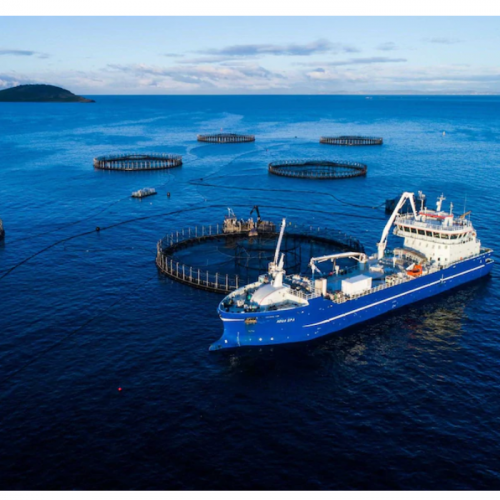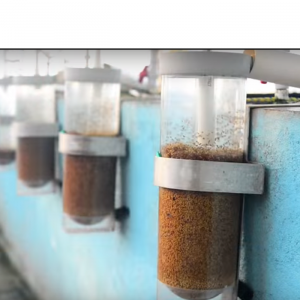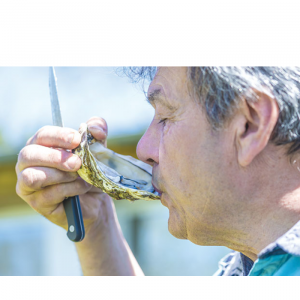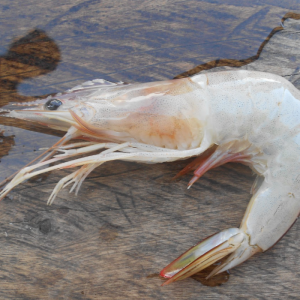
Aquaculture: Is It Just Fish Farming and Why are Billionaires Investing in the Industry?
| Fri, 13 Aug 2021 - 09:43
Andrew Forrest's foray into aquaculture is the latest food-focused venture for the billionaire. He's already got a significant stake in one of the biggest companies in the business, Huon Aquaculture, and he's looking to rapidly expand in Western Australia. He's not alone.
Growth in aquaculture in Australia and overseas has surged in recent years alongside consumer demand for more fish products and an emphasis on sustainability.
What is Aquaculture?
The United Nations' Food and Agriculture Organization defines aquaculture as the "farming of aquatic organisms including fish, molluscs, crustaceans and aquatic plants". Crucially, the process involves human intervention in the life cycle of sea creatures for purposes such as regular stocking, feeding, or protection from predators.
There are typically three steps involved in aquaculture: a hatchery producing fertilised eggs, larvae or fingerlings; a nursery fostering small larvae to fingerlings or juveniles, and; a so-called grow-out operation to farm fingerlings or juveniles into marketable sizes.While images of salmon cages often spring to mind, aquaculture can be done in all sorts of marine environments including freshwater, brackish water, or open water.
Read more: Sustainable Fisheries Partnership Unveils New Aquaculture Improvement Toolkit
Similarly, the gear used ranges from ponds and tanks to pens and floating cages. An important distinction is the intensity of an aquacultural process. The Federal Department of Agriculture, Water and the Environment says intensive aquaculture tends to involve intervention in the growing process, for example by "supplemental feeding and water aeration" used in an industry such as prawn farming.
By contrast, "extensive" aquaculture tends to allow the stock to grow on its own and uses natural food sources and conditions. An example of this is oyster farming or abalone "ranching". Also, aquaculture does not have to involve growing marine species for human consumption. Cultured pearls, for example, are produced through aquaculture, while other ornamental species can be made in similar ways.
Are We Eating It?
Each year, Australians consume about 350,000 tonnes of seafood or about 15 kilograms per person. Given Australia's huge coastline, it may come as a surprise to know most seafood consumed in the country is imported. According to the federal government, seafood imports accounted for 65 per cent of consumption in 2017–18. It is difficult to determine how much of that overall consumption is produced from aquaculture.
However, the Department of Agriculture, Water and the Environment notes that aquaculture made up 43 per cent of Australia's seafood production by value in 2012–13. The industry was worth $1.4 billion in 2018 and its most popular products were salmon, tuna, oysters, pearls and prawns, all of which can be readily found by Australian consumers.
Read more: Sustainable Aquaculture to Feed the World
How Much Fish Farming is There in Australia?
As noted, Australia's aquaculture industry is currently worth more than $1 billion a year, but the federal government has plans to double this by 2027. Australia has a long history of aquaculture, with consultancy Deloitte noting evidence that suggested: "Aboriginal populations 'farmed' eels, crayfish and yabbies centuries ago".
These days, Tasmania is the engine room of the local industry, hosting the two biggest players in ASX-listed salmon producers: Huon Aquaculture and Tassal. The next biggest fish in Australian aquaculture is South Australia, which pioneered tuna farming in the cold ocean waters off the Eyre Peninsula.
More recently, South Australia has been testing the viability of growing yellowtail kingfish, a prized species sold to international markets including Britain, Germany, Spain and France. Combined, Tasmania and South Australia account for the lion's share of the national aquaculture industry — about 75 per cent by value according to the federal government.
Beyond those two jurisdictions, aquaculture production falls away in size and scale, though many other states and territories are pursuing growth. In Queensland and New South Wales, prawn producers hit hard by an outbreak of white spot disease in 2016 are aiming to recover lost ground.
Read more: Study Back Offshore Aquaculture Expansion
On the west coast, mining billionaire Andrew Forrest has ambitious plans to become one of the world's biggest oyster producers by developing an aquaculture hub in Albany. He also wants to farm shellfish and finfish in northern waters. There are also long-held dreams to farm yellowtail finfish off WA's Mid West, while barramundi is grown at Cone Bay in WA's Kimberley.
It is across the Top End, though, that the magnitude of Australia's aquaculture quest becomes apparent. Under plans backed by deep-pocketed investors, a company called Seafarms wants to develop the world's biggest prawn farming operation. If realised, the project would span from Exmouth on WA's North West Cape to Gunn Point east of Darwin and involve the production of 150,000 tonnes of black tiger prawn a year.
What About the Rest of the World?
There's little doubt Australia is a minnow in the international aquaculture game. Australian Bureau of Agricultural and Resource Economics figures show Australia produced 97,000 tonnes of aquacultural goods in 2018. This compares with global production of 82 million tonnes in 2018, according to the United Nations, meaning Australia accounted for a fraction of 1 per cent in the world trade.
By far the biggest players were in Asia, led by China but followed relatively closely by South-East Asian countries such as Vietnam, Indonesia and Bangladesh. In its State of the World Fisheries and Aquaculture report for 2020, the UN estimated that Asian nations made up almost 90 percent of global aquaculture production.
Read more: Can Barramundi Become "The Salmon of the Tropics"?
What's more, the UN said the share of aquaculture in global fisheries output was growing. "The contribution of world aquaculture to global fish production reached 46 per cent in 2018, up from 25.7 per cent in 2000, and 29.7 per cent in the rest of the world, excluding China, compared with 12.7 per cent in 2000," the report noted.
Is It as Sustainable as it Pledges to be?
Depending on the type of aquaculture in question, there are mixed views about the sustainability of the industry. Long touted as an ethical alternative to overfishing taking place in some of the world's oceans, aquaculture has come in for more scrutiny as its size has grown.
In Australia, this scrutiny most famously came to attention following the publication of the book Toxic by acclaimed author Richard Flanagan. The book contended the salmon farming industry was not clean and green as its marketing tended to suggest but rather environmentally damaging. While the book caused a stir, on the other end of the equation, Andrew Forrest argues shellfish farming is beneficial to the marine environment.
He said molluscs, such as oysters, were a natural filter for marine environments, arguing their production was entirely sustainable. "If we can do it so it's sustainable, so it increases marine life, abundance and biodiversity, plus makes this beautiful protein which gives jobs, employment, economy to the local communities, then it's a win-win for nature and a win-win for mankind," he said last year.
"That's reasonably rare, so we're going after it hard."
Source: abc.net.au






















